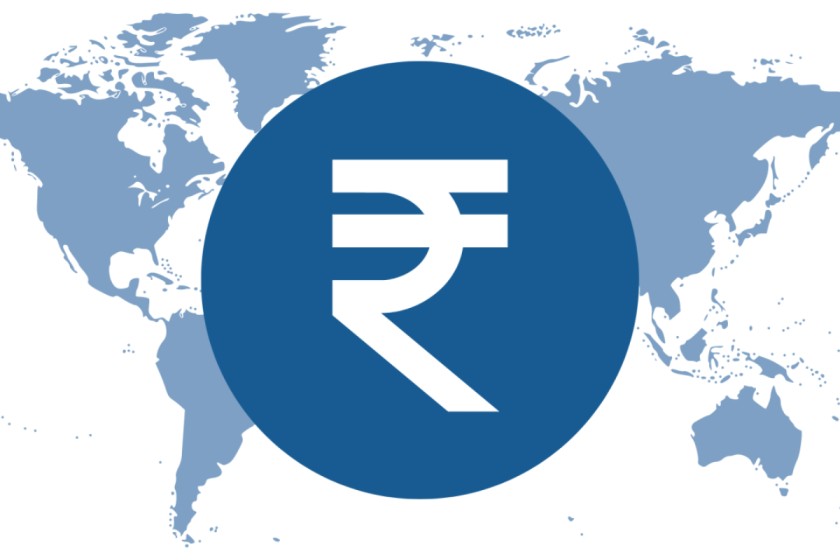- October 25, 2024
Rupee Internationalisation: A Steep Climb Ahead

India and Myanmar are discussing a full-fledged adoption of a local currency trade settlement mechanism using the Indian Rupee and the Myanmar Kyat to enhance the trade relations between the neighbouring countries. It was discussed during the 8th meeting of the India-Myanmar Joint Trade Committee on September 27th and a meeting between Commerce and Industry Minister Piyush Goyal and Kan Zaw, Myanmar’s Minister of Investment and Foreign Economic Relations, on the sidelines of the 12th East Asia Summit Economic Ministers’ Meeting at Vientiane, Laos.
While the Rupee-Kyat trade settlement mechanism can potentially enhance trade relations between India and Myanmar, its success hinges on addressing significant challenges such as infrastructure deficits, trade volume, and the formalisation of existing trade practices.
Strategic dimension
India-Myanmar relations and the wide use of the Rupee-Kyat mechanism need to be analysed from the perspective of the potential benefits and challenges framework. Myanmar is strategically important to India’s “Act East” policy, which aims to strengthen economic ties with Southeast Asia. Promoting the Rupee-Kyat mechanism would demonstrate India’s commitment to enhancing trade and economic cooperation with Myanmar, potentially leading to deeper integration with the Southeast Asian region.
Lowering costs and compressing settlement time
By eliminating the need for currency conversion, the mechanism could lead to lower transaction costs and faster settlement times, benefiting both countries’ businesses. Eight Myanmar banks were authorised by the Reserve Bank of India (RBI) to operate a rupee-kyat trade settlement mechanism on July 21, 2024.
Several requirements must be considered to effectively leverage the Rupee’s internationalisation and establish it as a local currency trade settlement mechanism.
Challenges to be taken on to ensure effective implementation
Firstly, achieving balanced trade is crucial for the success of the Rupee trade initiative. If one country accumulates a significant surplus of the other country’s currency, it may encounter difficulties in utilising those funds effectively, potentially resulting in friction or imbalances within the system.
Additionally, there may be a need for letters of credit, as exports may not always align with imports from a single trade partner, creating a reliance on this mechanism.
Furthermore, trading partners should maintain trade complementarity, meaning they should ideally exchange similar goods; otherwise, a lack of complementarity could lead to random surpluses and deficits that hinder economic development.
Lastly, adopting alternative payment systems with diverse trading partners could complicate domestic monetary policy, posing challenges such as managing exchange rates, controlling inflation, and ensuring financial stability amidst varying currencies and economic fluctuations.
What’s holding back Rupee internationalisation?
India has encountered several challenges in promoting the widespread adoption of the Rupee as a local currency for trade settlement, including Russia, in light of its trade deficit with many of these countries. On the demand side, the limited global acceptance of the Indian rupee presents a significant obstacle. Simultaneously, on the supply side, settling trade in rupees with nations where India has a trade deficit complicates the situation. The accumulation of large rupee balances by these countries raises concerns about currency valuation and potential trade disruptions, highlighting the need for effective mechanisms to manage these balances and ensure their optimal utilisation.
While India seeks to promote rupee transactions with its trading partners, such as Myanmar, its trade relations encounter several hurdles that hinder the widespread adoption of local currency settlement mechanisms.
One significant challenge is poor infrastructural connectivity with its neighbouring countries. Inadequate transportation infrastructure poses a major barrier to robust trade, often forcing transactions to rely on costly sea routes, which increase both costs and transit times.
Additionally, a substantial portion of trade with these neighbouring countries occurs through informal channels, bypassing official customs and regulations. This trend is largely driven by the difficulties and expenses associated with formal trade, pushing traders toward more convenient, albeit unregulated, alternatives. Furthermore, exporters on both sides encounter numerous non-tariff barriers, such as sanitary and phytosanitary measures and technical trade obstacles.
For instance, India’s trade volume with Myanmar is currently relatively low compared to China’s trade with the country. India’s exports to Myanmar dipped to US$670.4 million in 2023-24 from $807 million in the previous year. Imports increased to US $1.07 billion last fiscal year from US $954.74 million in 2022-23. Increasing the volume of bilateral trade is essential to make the Rupee-Kyat mechanism attractive. This will require identifying and addressing non-tariff barriers, diversifying the trade basket, and exploring new avenues for cooperation in sectors like agriculture, pharmaceuticals, and energy.
Limited access to trade financing and the absence of direct banking channels between the two countries pose challenges for businesses engaged in bilateral trade. Encouraging the opening of bank branches, establishing correspondent banking relationships, and exploring currency swap arrangements will be crucial in facilitating cross-border transactions and promoting the use of local currencies. The high cost of settling transactions through third-country banks can be significantly reduced with direct banking channels between India and Myanmar.
The India-Myanmar Rupee-Kyat trade settlement mechanism can benefit India’s economic and national interests. However, realising these benefits requires addressing several challenges. Moreover, a significant huddle for alternate systems is achieving widespread adoption and acceptance of the system. In contrast, with its extensive network and established infrastructure, existing systems like SWIFT are deeply entrenched in international finance. Convincing businesses and financial institutions to transition to new systems requires demonstrating their reliability, security, cost-effectiveness and long-term viability. By taking concrete steps in these areas, India can create a conducive environment for the success of the Rupee Trade Settlement mechanism.
(Anisree Suresh is a Research Associate at the Takshashila Institution, which is an independent think tank and school of public policy.)
Views are personal and do not represent the stand of this publication.
